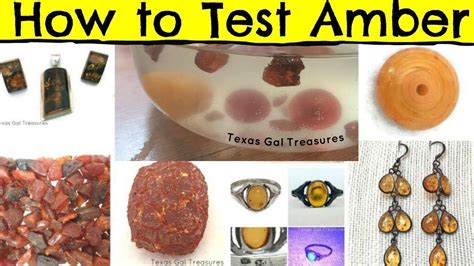Real Amber: The Definitive Guide to Identification
Amber, fossilized tree resin, captivates with its warm glow and ancient history. But the allure of this gemstone has also led to a booming market for counterfeits. This definitive guide will equip you with the knowledge to confidently identify real amber, separating genuine treasure from imitation. We'll delve into the science behind amber formation, explore various testing methods, and arm you to make informed purchases.
What is Amber, and How Does it Form?
Amber's journey begins millions of years ago with resin secreted by ancient coniferous trees. This sticky substance trapped insects, plant matter, and even small animals, preserving them in exquisite detail. Over millennia, geological processes – pressure, heat, and chemical changes – transformed the resin into the hardened, fossilized material we know as amber. This lengthy process is crucial for understanding its unique properties and how to distinguish it from imitations. The age of amber varies considerably, ranging from a few million to hundreds of millions of years old. The most common types originate from the Baltic region, known for its significant amber deposits.
How to Identify Real Amber: Key Characteristics
Several key characteristics help differentiate real amber from its imitations:
1. Texture and Appearance:
Real amber possesses a smooth, warm, sometimes slightly tacky surface. It exhibits a unique luster, neither too shiny nor too dull. While the color palette varies widely (from honey yellow to deep red, even blue or green), genuine amber often displays subtle variations in tone and color throughout the piece. Look closely for inclusions – trapped insects, plant fragments, or air bubbles – which are a strong indicator of authenticity, though their presence is not guaranteed in all amber pieces.
2. Weight and Feel:
Real amber feels surprisingly lightweight for its size. This lower density compared to many imitations (such as plastic or glass) is a useful distinguishing characteristic. Hold the piece in your hand and note its relative lightness; it shouldn't feel overly heavy for its volume.
3. Fluorescence Under UV Light:
Many (but not all) types of real amber fluoresce under ultraviolet (UV) light, emitting a bluish-white or greenish glow. This is a helpful test, but not foolproof, as some imitations can also fluoresce. The intensity and color of the fluorescence can vary depending on the type of amber and the UV light source.
4. Heat Test (Use Caution!):
A common method involves briefly applying heat to a needle or pin and touching the amber. Real amber will release a pleasant pine-like aroma. Caution: This method carries a risk of damaging the amber, particularly if overheated. It is advisable to perform this test on an inconspicuous area, or better yet, use other methods first.
Identifying Common Amber Imitations
Several materials are frequently passed off as amber:
- Copal: A younger, softer resin, copal often resembles amber but lacks its hardness and age. It's easily scratched and may feel somewhat sticky.
- Plastic: Modern plastics are often used to create convincing imitations. These typically lack the natural variations in color and inclusions found in genuine amber.
- Glass: Glass imitations are usually heavier and more uniformly colored than real amber. They lack the characteristic warmth and subtle variations in tone.
H2: What are the different types of amber?
Amber is not a single substance, but rather a broad category encompassing fossilized resins from various tree species throughout geological history. This leads to a wide diversity in color, transparency, and inclusion content. Some notable types include Baltic amber (renowned for its abundance and quality), Dominican amber (often showcasing vibrant colors and diverse inclusions), and Mexican amber. The specific type often influences pricing and collectability.
H2: How can I test amber at home?
Several simple home tests can help assess the authenticity of amber. These tests are not always conclusive, but they provide valuable indicators. The UV light test, described earlier, is relatively easy to perform with a UV lamp readily available online. The salt water test, where amber floats in saltwater while many imitations sink, is also a handy method. However, remember that these tests are not fail-safe and should be combined with a visual examination and consideration of other properties discussed.
H2: Is there a reliable way to authenticate amber without specialized equipment?
While definitive authentication requires professional gemological analysis, combining multiple identification methods – visual inspection, weight estimation, UV light test, and the cautious application of a heat test – can significantly improve your confidence in discerning genuine amber from imitations. Remember that no single test guarantees 100% accuracy; a holistic approach is key.
Conclusion: A discerning eye and informed approach
Identifying real amber requires a combination of knowledge and practical testing. By understanding its formation, properties, and common imitations, you can navigate the amber market with confidence. Remember to always purchase from reputable dealers who provide clear provenance and certifications of authenticity whenever possible. The beauty of genuine amber lies not only in its visual appeal but also in its rich history and scientific significance.
(Author Note: This article is for informational purposes only and does not constitute professional gemological advice. Always consult with a qualified gemologist for definitive authentication.)

